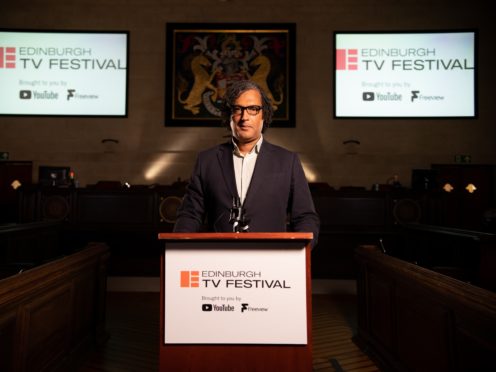David Olusoga has said his past experiences of depression and wanting to quit television are similar to those of “many black and brown people” in the industry.
The historian reflected on his experiences as a black broadcaster in the annual James MacTaggart Memorial Lecture, the keynote speech of the Edinburgh TV Festival.
He said there is a “lost generation” of black and brown people who did not stay in the business.
“I stand here today not as one of the TV industry success stories, but as a survivor,” he said.
“I am one of the last men standing of TV’s lost generation.
“The generation of black and brown people who entered this industry 15, 20, 25 years ago with high hopes.
“I’m a survivor of a culture within TV that failed that generation.

“I’m here because a handful of people used their power and their privilege to help me.”
Olusoga said that during his early years in television “there were parts of the industry in which diversity meant making sure that there was a fair balance of people from Oxford and Cambridge”.
He added that it is “lonely” as a black person in the television industry.
“Being the only black person on a production means being the only person asking certain questions, the only person uncomfortable that an image or a sequence reinforces certain stereotypes,” he said.
“Like other black people I know in this industry I’ve spent my career complaining that scripts or rough cuts contain interviews with white experts, while all the black contributors are victims of the phenomena in question are speaking about their personal experiences – their feelings not their expertise.”
Olusoga said he had been labelled as “difficult” during his career.

The Civilisations presenter said that while he has received “amazing opportunities”, he has also been “patronised and marginalised”.
“I’ve been in high demand, but I’ve also been on the scrap heap,” he said.
“I’ve felt inspired, and convinced that our job – making TV and telling stories – is the best job in the world.
“But at other times I’ve been so crushed by my experiences, so isolated and dis-empowered by the culture that exists within our industry, that I have had to seek medical treatment for clinical depression.
“I’ve come close to leaving this industry on several occasions. And I know many black and brown people who have similar stories to tell.”
Olusoga said that the lack of diversity is particularly noticeable in production roles and “people who make and commission the UK’s television programmes do not look like the population at large – our audience”.
He said the Black Lives Matter movement had “forced our society to have conversations that for decades we have put off or avoided”.
